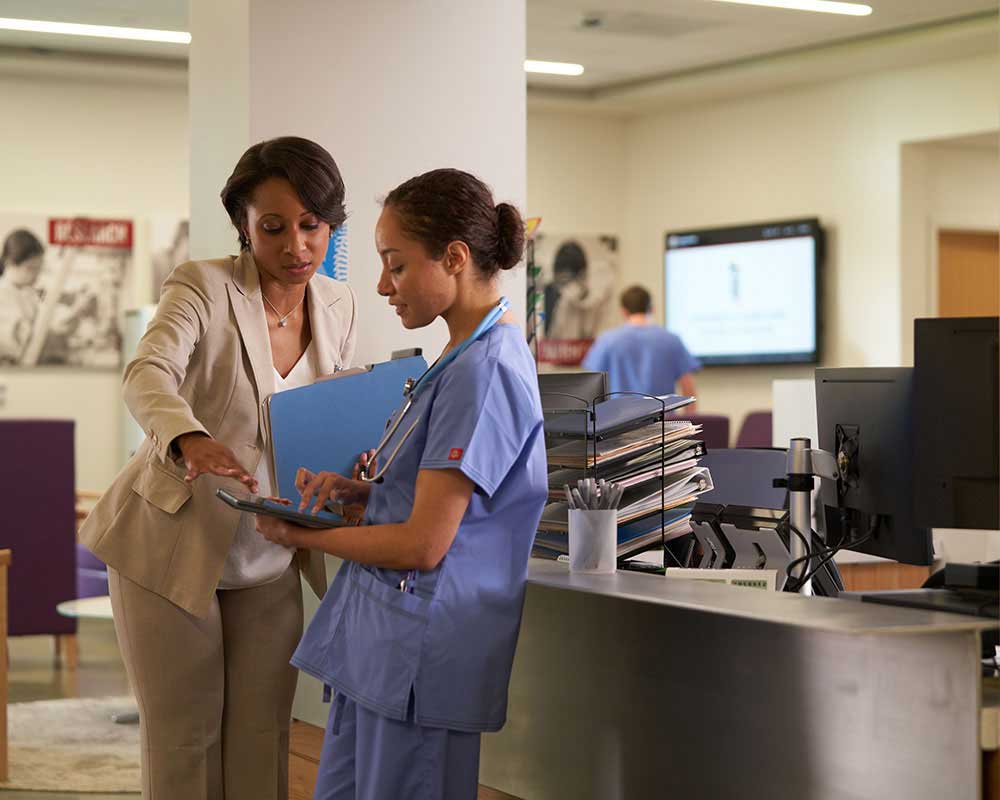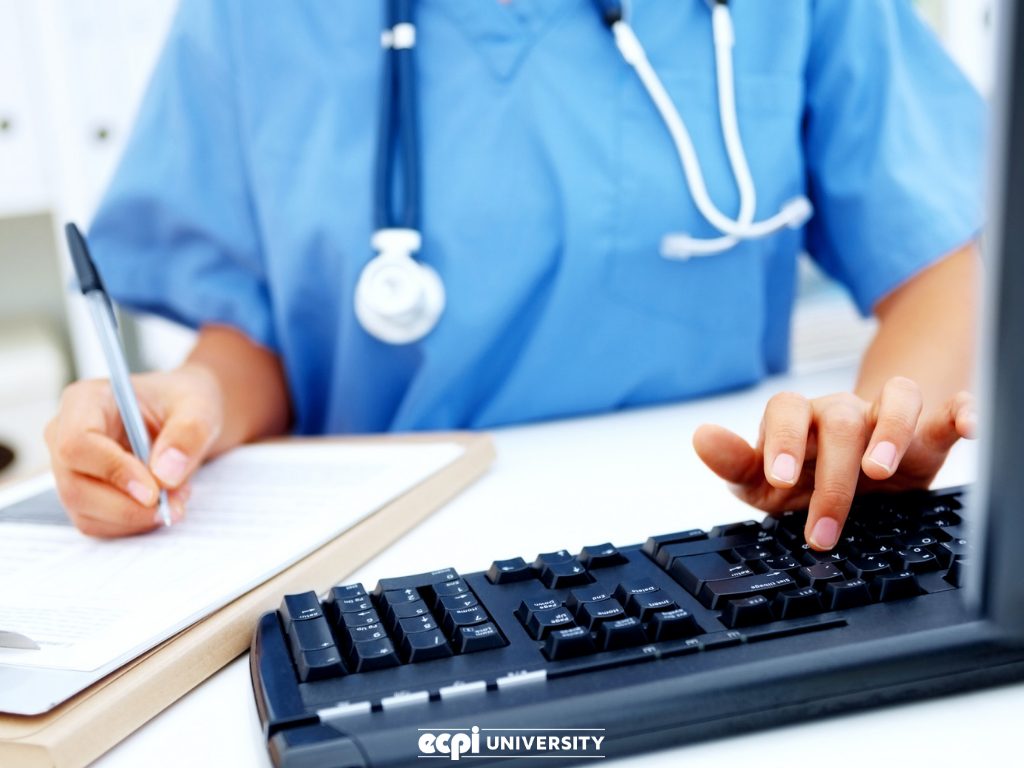Ideal Practices in Medical Administration for Improving Performance and Reducing Prices
In the ever-evolving landscape of health care, the pursuit of best techniques in medical administration is extremely important for improving efficiency and suppressing expenses. By integrating sophisticated technologies such as electronic health documents and telemedicine, doctor can enhance procedures and enhance patient treatment. Nonetheless, innovation alone is not a remedy; maximizing source allowance and cultivating collective interaction among care teams are just as essential (medical administration). As companies strive to balance high quality and cost, what methods should be prioritized to achieve these dual goals? The answers to these questions hold the trick to a much more lasting healthcare system.
Leveraging Advanced Modern Technology
In today's quickly evolving medical care landscape, leveraging sophisticated innovation is no more optional however necessary for efficient clinical administration. The integration of electronic remedies right into healthcare systems has actually changed the way facilities run, streamlining procedures and enhancing person care. Electronic Wellness Records (EHRs) are essential, providing detailed person information that can be accessed promptly by accredited employees, thus lowering redundancy and reducing errors. By streamlining patient information, EHRs eliminate the requirement for difficult paperwork and promote seamless interaction amongst doctor.
Telemedicine is another technological advancement that has actually changed patient communication. It supplies ease for both individuals and healthcare experts by allowing remote appointments, which can lower the demand for in-person brows through and maximize appointment scheduling. Furthermore, telehealth systems can expand medical care accessibility to rural or underserved locations, bridging spaces in care shipment.
Additionally, the use of Expert system (AI) and artificial intelligence is coming to be significantly widespread in anticipating analytics, permitting very early detection of prospective wellness issues and even more educated decision-making. These innovations, when incorporated efficiently, can improve analysis accuracy and customize patient therapy plans, eventually bring about improved health care results and functional performance.
Optimizing Source Allowance
By strategically taking care of sources such as personnel, equipment, and funds, health care centers can substantially boost their operational efficiency, enhance patient outcomes, and reduce unneeded expenditures. The very first step in enhancing source allotment entails conducting a comprehensive evaluation of current possessions and determining locations where resources might be underutilized or exhausted.
Focusing on resource allotment based upon individual needs and service needs is crucial. This entails straightening sources with high-demand areas, such as emergency situation care or specialized treatments, to guarantee timely and effective patient treatment. Applying versatile staffing versions can likewise optimize labor sources by adjusting workers allocation in feedback to varying individual volumes. In addition, embracing telemedicine and other technological options can ease physical source restraints by offering alternate opportunities for patient-provider interactions.
Funds should be diligently checked and alloted with tactical foresight to support both short-term operational demands and long-lasting institutional goals. This includes investing in training programs that enhance team proficiencies and embracing energy-efficient methods that reduce functional costs (medical administration). Ultimately, a maximized resource allotment technique cultivates a lasting medical care atmosphere that is responsive, efficient, and monetarily prudent
Streamlining Operations Processes
When health care centers objective to boost functional performance, simplifying operations processes comes to be a critical focus. Effective process decrease redundancy, eliminate unnecessary actions, and boost coordination among health care professionals. This method not only speeds up service delivery but likewise boosts the pop over here high quality of patient care.

Next, modern technology assimilation plays a significant role in improving operations. Executing electronic health and wellness records (EHRs) and electronic medical professional order access (CPOE) systems minimizes documentation, reduces human error, and guarantees info comes to all pertinent employees. In addition, leveraging telemedicine systems can improve individual appointments and follow-ups, lowering the stress on physical facilities.

Ultimately, streamlined process lead to set you back decreases and improved client fulfillment, cultivating a much more lasting health care environment.
Enhancing Information Administration
Structure upon streamlined workflows, maximizing data administration comes to be an important element ahead of time health care management. Reliable data management systems are important for keeping accurate individual documents, improving decision-making, and guaranteeing compliance with regulatory criteria. By applying robust information administration options, health care centers can improve the quality of client care while at the same time reducing operational costs.
One key element of boosting data monitoring is the integration of advanced electronic wellness record (EHR) systems. These systems assist in the smooth exchange of client information across different divisions, decreasing replication of examinations and lessening mistakes. A properly designed EHR system supports data analytics, making it possible for doctor to identify trends and make educated decisions regarding person treatment.
Moreover, securing individual data is critical. Adopting comprehensive cybersecurity steps, consisting of security and routine audits, guarantees the honesty and privacy of delicate information. This not just secures people however likewise maintains the organization's credibility.
Buying staff training is an additional vital factor. Enlightening healthcare specialists on data monitoring methods improves their ability to effectively use modern technology, causing improved individual end results. Finally, boosting data administration with sophisticated modern technology and detailed training is vital for attaining effectiveness and cost decrease in medical administration.
Fostering Collaborative Interaction
An important component in advancing clinical management is fostering joint interaction among healthcare specialists. Efficient communication is critical for ensuring smooth individual treatment, optimizing therapy end results, and minimizing errors. By urging open discussion and control throughout multidisciplinary groups, medical care organizations can improve their operational performance and minimize unnecessary costs.
Central to this method is the integration of interaction modern technologies such as electronic health and wellness records (EHRs) and secure messaging systems, which help with the quick exchange of important client information. These devices allow doctor to accessibility and share data in actual time, making sure that all employee are notified and straightened in their decision-making procedures. Furthermore, routine group meetings and interdisciplinary rounds can further promote a culture of partnership and responsibility.
Educating programs concentrated on boosting communication abilities are likewise vital. These programs can help staff create the capability to communicate information clearly and listen proactively, hence minimizing misunderstandings and cultivating an encouraging workplace. Furthermore, embracing standard interaction protocols, such as SBAR (Circumstance, Background, Analysis, Referral), can enhance the exchange of details, making sure that essential details are communicated succinctly and effectively. Eventually, promoting collaborative communication results in enhanced health care distribution and expense savings (medical administration).

Verdict
Incorporating advanced innovation, such as digital health and wellness records and telemedicine, together with enhanced source appropriation and streamlined workflow procedures, is vital for enhancing efficiency in clinical management. Reliable data management and fostering joint communication look at this site among medical care teams are critical for lessening redundancies and improving treatment quality. By focusing on precautionary treatment and read this article involving in high quality renovation campaigns, medical care organizations can achieve substantial cost financial savings and improved patient results, thus making certain lasting medical care delivery in a significantly complicated setting.